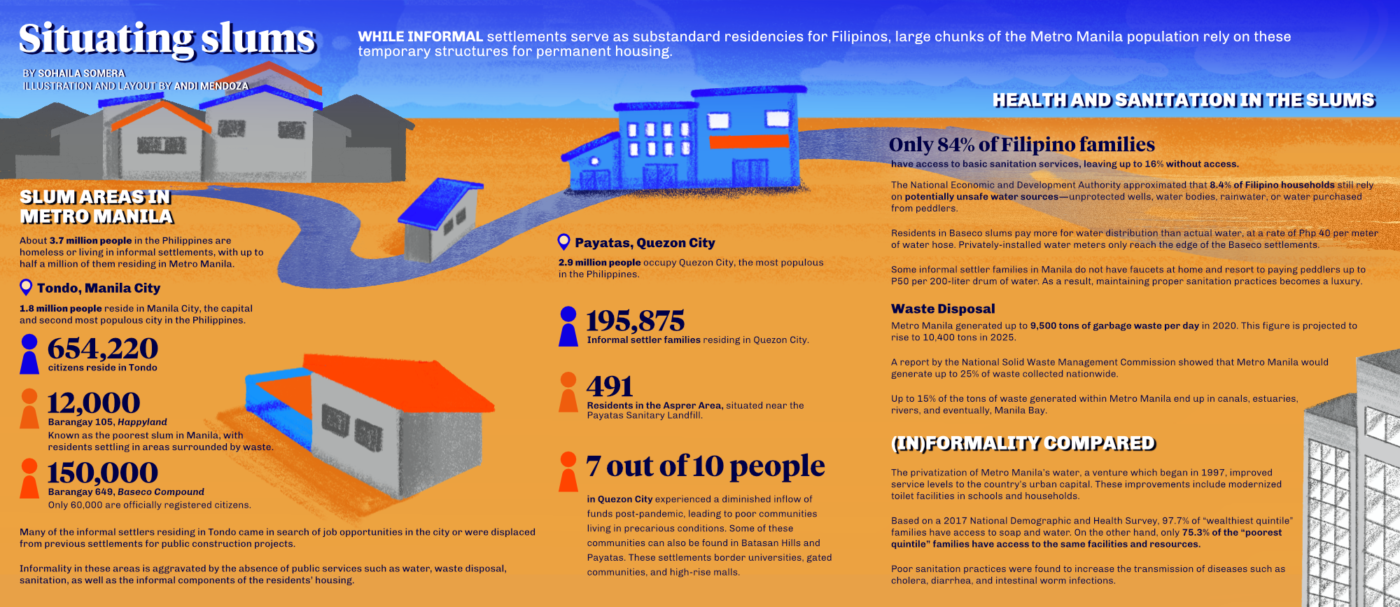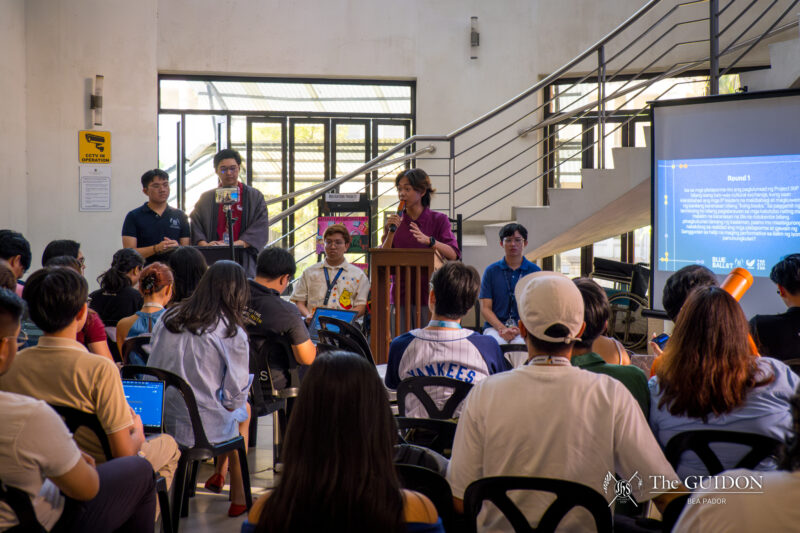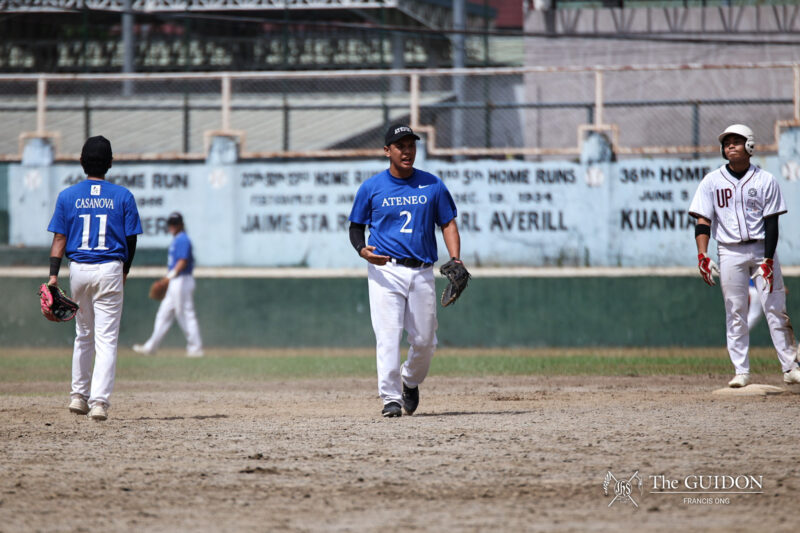WHILE INFORMAL settlements serve as substandard residencies for Filipinos, large chunks of the Metro Manila population rely on these temporary structures for permanent housing.
Slum areas in Metro Manila
About 3.7 million people in the Philippines are homeless or living in informal settlements, with up to half a million of them residing in Metro Manila.
Tondo, Manila City
- 1.8 million people reside in Manila City, the capital and second most populous city in the Philippines.
- As of 2020, 654,220 citizens reside in Tondo—the largest district in the city of Manila by area and population.
- About 12,000 of these residents live in Barangay 105 (“Happyland”), Tondo, known as the poorest slum in Manila, with residents settling in areas surrounded by waste.
- 150,000 residents live in Barangay 649 (“Baseco Compound”) near Tondo. Only 60,000 are officially registered citizens.
- Many of the informal settlers residing in Tondo came in search of job opportunities in the city or were displaced from previous settlements for public construction projects.
- Informality in these areas is aggravated by the absence of public services such as water, waste disposal, sanitation, as well as the informal components of the residents’ housing.
Payatas, Quezon City
- 2.9 million people occupy Quezon City, the most populous in the Philippines.
- Around 195,875 informal settler families reside in Quezon City. 491 of these residents live in the Asprer Area, situated near the Payatas Sanitary Landfill.
- 7 out of 10 people in Quezon City experienced a diminished inflow of funds post-pandemic, leading to poor communities living in precarious conditions. Some of these communities can also be found in Batasan Hills and Payatas. These settlements border universities, gated communities, and high-rise malls.
Health and sanitation in the slums
Access to and distribution of water
- Only 84 percent of Filipino families have access to basic sanitation services, leaving up to 16% without access.
- The National Economic and Development Authority approximated that 8.4% of Filipino households still rely on potentially unsafe water sources—unprotected wells, water bodies, rainwater, or water purchased from peddlers.
- Residents in Baseco slums pay more for water distribution than actual water, at a rate of Php 40 per meter of water hose. Privately installed water meters only reach the edge of the Baseco settlements.
- Some informal settler families in Manila do not have faucets at home and resort to paying peddlers up to Php 50 per 200-liter drum of water.
Waste disposal
- Metro Manila generated up to 9,500 tons of garbage waste per day in 2020. This figure is projected to rise to 10,400 tons in 2025.
- A report by the National Solid Waste Management Commission showed that Metro Manila would generate up to 25% of waste collected nationwide.
- Up to 15% of the tons of waste generated within Metro Manila end up in canals, estuaries, rivers, and eventually, Manila Bay.
- Only about 20% of Metro Manila’s barangays and villages have a working materials recovery facility (MRFs). These MRFs are barangay-owned or leased land allocated for the processing of recyclable materials to be reused by manufacturers.
- The gap in the number of MRFs per barangay is attributed to the limited and expensive lots in the local governments of Metro Manila.
(In)formality compared
- The privatization of Metro Manila’s water, a venture which began in 1997, improved service levels to the country’s urban capital. These improvements include modernized toilet facilities in schools and households.
- Based on a 2017 National Demographic and Health Survey, 97.7% of “wealthiest quintile” families have access to soap and water. On the other hand, only 75.3% of the “poorest quintile” families have access to the same facilities and resources, leading to poor sanitation practices and increased risks of diseases.




